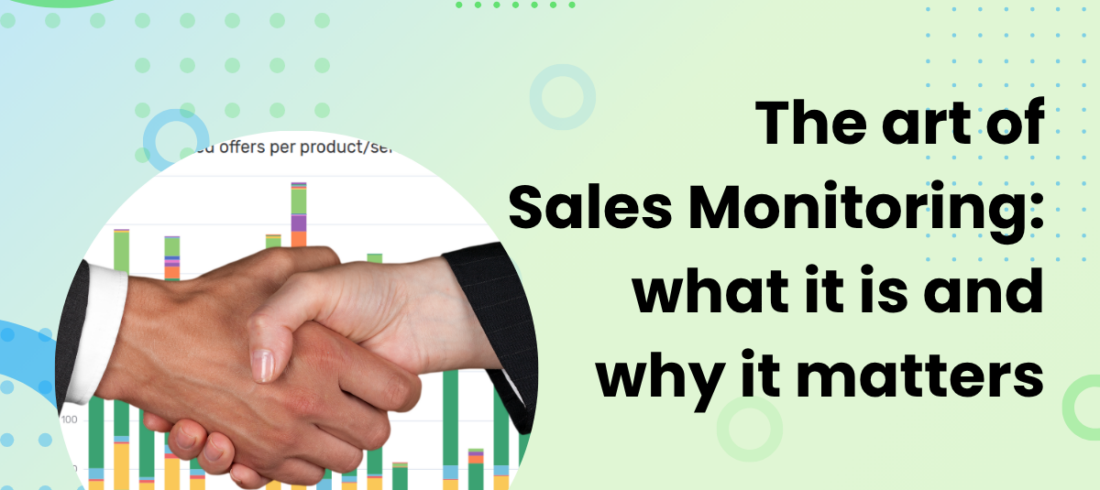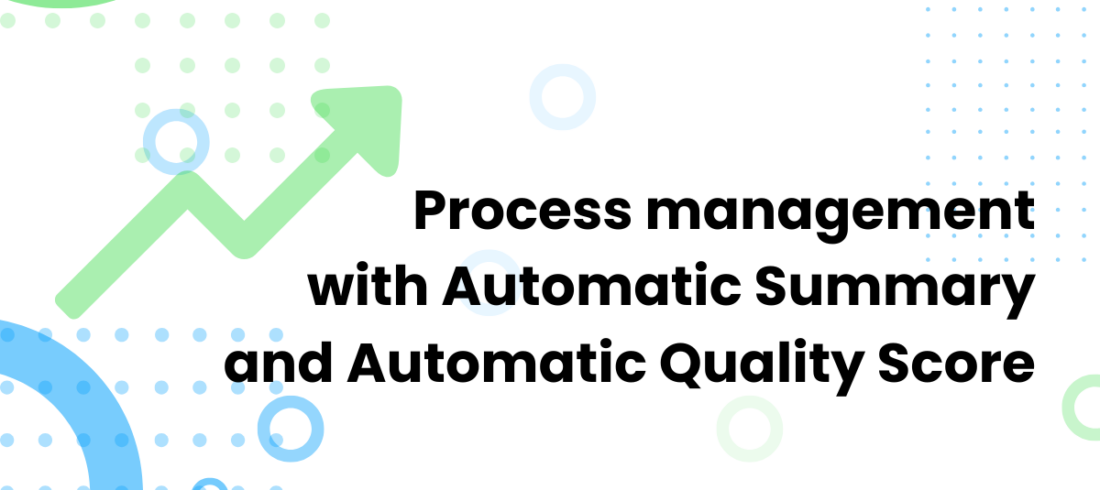What is efficiency?
When we at Feelingstream think about efficiency, we think about efficient businesses.
Tony Robbins says this on his website: “Business efficiency means maximizing your outputs from your given inputs – or making the most of your resources. If you haven’t thought about how to improve efficiency in a business, you may well be overlooking places where you can cut down on the time you’re spending on a particular task. This saves you money and manpower in both the short term and the long run.”

That gives you some idea of what we are thinking about when talking about business efficiency. On his site, Tony mentions 10 different tips for efficiency in a business environment and we would like to highlight some – using the right tools, technology, and finding knowledge (what to build and what to cut).
This is what we wish to bring to you with the help of this article – information and stories about using tools and technology. There is a lot that AI can do to help you gain knowledge for business decisions and making changes. We want to welcome you into the world of efficiency with the help of smart tools and AI.
Why is efficiency important?
Efficiency is about making the best possible use of your own and company resources. Efficient companies look at what they have and how to make the most of it. Being efficient means managing costs, not wasting time, and finding areas for improvement. Efficient business decisions are wise, well-thought-out, and backed by relevant data.

Being efficient goes hand in hand with being competitive in the market. An efficient business can keep its business costs down and can offer its services and products at a competitive price. If services and products are streamlined, work processes thought out, and everyone is working towards a clear goal, the business will be more successful than the average competitor.
How is efficiency measured?
When it comes to production or product manufacturing, measuring efficiency is quite straightforward (may still not be easy, though!). It is often measured as the ratio of useful output to total input. Looking at the work of a single person, for example, a customer service agent, their efficiency is usually measured in the number of customer conversations.

A business can measure its efficiency by looking at its yearly revenue per employee, its net profit margin, inventory turnover, etc.
While efficiency for the business is measured in different ways, there are always many metrics that a business can use to find further efficiency. This is also where technology and tools really come into play. When you have the tools to help analyze your current business processes, your customer service, or how well a product works, you can have data to back up decisions for making changes.
Where could you find more efficiency with AI and our features?
Feelingstream is all about allowing large companies with various customer service channels to have 100% visibility of their customer conversations. This means that if you have written communications such as email and chat, we can help you analyze them. We bring the text to the table with calls as well, offering speech-to-text services and transcribing all your calls into text format which you can then analyze. We do text analysis magic in the world of NPS as well.
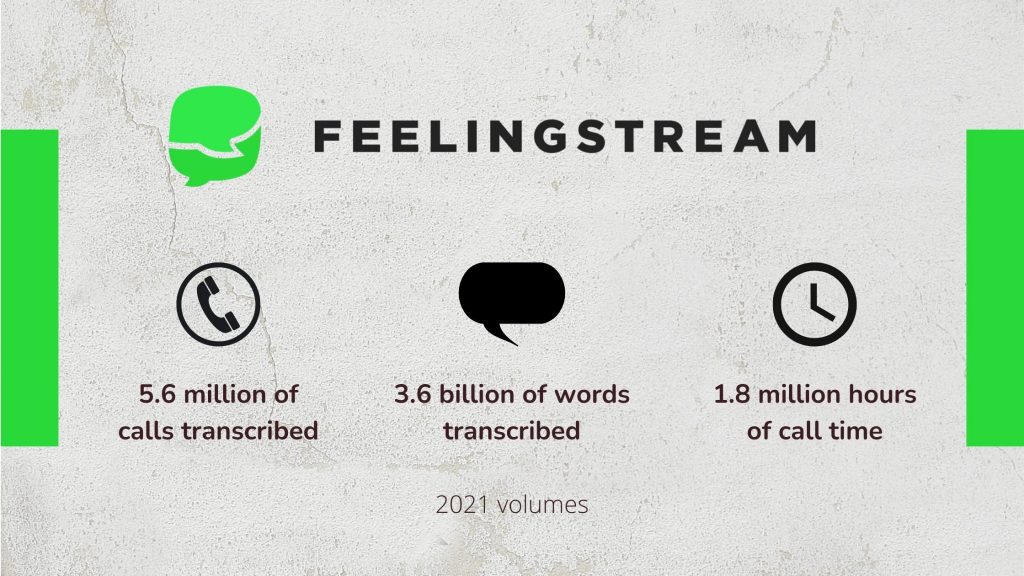
Imagine that you have every customer word available to you. Every conversation and every thought that the customer shares. The amount of feedback and information that you can get from this is IMMENSE!
All you need to do then is to decide your starting point and get going with data analysis. We offer a conversation analytics tool for that, so there’s no need to actually read every conversation (although there is a time and place for doing that and listening to calls, too!).
LET US GIVE YOU A TOUR INTO THE WORLD OF USING AI FOR YOUR BUSINESS AND CUSTOMER SERVICE EFFICIENCY.
Do you know what your customers call you about?
If you do not use any wise automation tools such as Feelingstream, then the answer is most likely not. You have a rough idea, and you may base that on the predefined topics that your agents manually pick out of a list of possible options. A list that someone created. A list that may include the word other. What is behind that other? A large percentage of your calls?
What we’re trying to refer to here is that we’ve looked at how manual topic selection works, and we’ve realized it’s not giving you a full picture. This is how Feelingstream also got started, out of necessity in getting that picture where predefined topics failed. Our solution includes automated call topic detection with the help of AI.

We’ve found that analysis of the call transcripts with the help of AI gives a more exact overview of the topics inside calls. In addition to being more exact, this also saves agent time. It is one less step that the agent needs to worry about regarding their documentation.
Knowing the ratios between different topics in your customer service calls will give you an idea of what your customers talk about and how it changes over time. You can use this data to move further with content analysis and finding data to answer your business questions.
How much time is spent on documenting customer conversations?
When we go one step further from automated topic classification with the help of AI, we can reach automated after-call note processes. Customer service agents spend roughly 25% of their work time on documentation. That means hours of their day that they do not spend talking to the customers that need their help. Could agents work more efficiently? Yes!
The documentation process of the call centres may vary from business to business. Usually, the agents have to document the topic of the call and some sort of a summary of the call. The quality of this documentation varies, this puts more time pressure on the agents and takes away focus from the customers.
Technology can be used not only to add automatic topics to the calls but also to create summaries of the customer contacts. Feelingstream offers this solution that makes the agents work more efficient. If this time is saved, the agents can talk to more customers while offering a better quality of service. The pressure of documenting during the call is taken from them and they can listen to the customers. Data quality in CRM can go up by 37%. Well if that is not efficiency, then what is?
How to reduce repetitive calls?
If you have gotten the documentation managed with the help of AI, you’ve freed up your agents time, the floor is buzzing and change is in the air, what’s next? One important KPI for businesses with customer service is FCR or first call resolution. Let’s look into that topic.
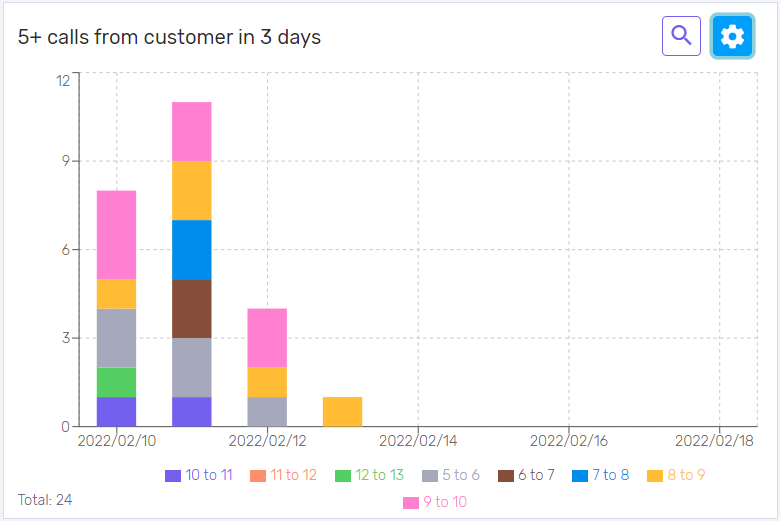
We all know that there are repetitive calls that bring in some volume. How many are there though? Why are those repetitive calls happening? Again, you can use AI to answer that.
Feelingstream’s conversation analysis platform allows users to enrich data with different evaluations. One of them is for repetitive calls. Automated flags can go up each time a customer is calling customer service within a pre-determined period. You can see how many of your customers call you more than once each day or week.
The next step is repeat call analysis – why do they call? Could the agent have done something better in the initial call? Train the agent! Is there a certain process that is difficult for customers? Work on it and change it! Get rid of your repetitive calls by taking action where needed. Bringing up your first call resolution rates will mean fewer calls altogether, one step again towards a more efficient call centre.
How to bring down the number of avoidable calls?
Each business knows that there is some number of avoidable calls that they get each day. Initially, none of those reasons for contact may seem big enough to warrant a change. When you do get to analyzing the number of the actual calls though, the numbers add up. We’ve written a great article in regards to reducing avoidable inbound calls with conversation analysis. You’ll see a few good examples there for the impact of those seemingly small changes.

Avoidable calls usually are derived from needs to change. When you make those changes then, you become more efficient. Whether it’s changing your website, self-service, or the service itself, it usually pays for itself in the long run. Our customers are great at pinpointing problem areas. It’s just a matter of having to listen.
How to get your customers to use the self-service more?
A lot of avoidable calls can come from the fact that you do not have a well-working self-service portal. If customers call about issues that they could resolve themselves, then yes, they might not be tech-savvy. These days, that’s just a small percentage of your customers, though. Most likely your self-service just needs improvements. What to do then? Listen to your customers.
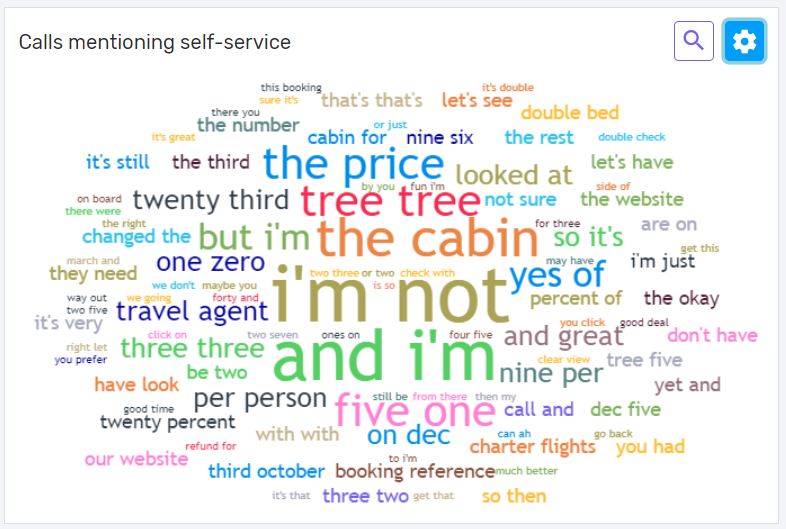
If you use Feelingstream’s conversation analytics platform, you can put together specific searches to find self-service issues. Customers will mention things that they did not find, could not use, or did not understand. Put your focus on this!
It can be as simple as bringing a button to the foreground or changing the layout of a page. Quick magic in the hands of a web developer. Then monitoring – do those conversations stop? Yes? Efficiency at its best again. Look at the next issue and make more magic happen.
The same information goes for your website. If you want your customers to call you less for things that they could find on the website, just improve it. They will tell you what they need.
Are your customer service processes efficient?
Feelingstream offers many automated evaluations and enriches your customer conversation data. You can use these evaluations and metrics to find ideas for improvement. One of the things that we do is measure silence in phone calls. Some silence is fine and completely expected. When there‘s too much of it, then it’s telling of an issue. Usually, the issue has to do with efficiency.

Finding silences, analyzing the causes and then taking action is one way of making your customer service more efficient. Often silence can be reduced by either changing processes or training agents. Either way, dealing with silence is important as tackling it can reduce the length of the phone calls up to 20%.
There are other interesting evaluations that we can look at based on metadata, text or audio analysis. For example, for your chat channel, different metrics give you ideas for improving or starting to use chatbot services.You can also measure the efficiency of changes over time by seeing the number of reduced contacts regarding the topics.
How do you know if our customers are leaving?
It is possible to assess the churn risk of a customer by evaluating how and what they say in the customer conversations. Feelingstream can measure the churn risk of a customer so action can be taken before the customer is out of the door. It is a well-known fact that it is 5 times harder to get a new customer than keeping your current ones. So, it’s important that you do a great job at managing churn rates and keeping the churn risk down.
If the AI model for churn detects that there is a churn risk with a customer, the conversation can be flagged as that and then it is a matter of taking action. Do you have a specific team analyze the conversation with the risk, then contact the customer and turn the situation around? Are there some pre-planned offers that you send the customers via email? Maybe you notify a team lead any time there’s churn risk detected after a conversation to act?
The way you react is up to you – and well, we suggest you try different options, measure the results, and then reassess. The best action is the one that is true and tested. You should also readjust over time and keep up with changes.
How do you manage your email support queues?
Being efficient with the email support channel means replying fast, being precise in the replies and not doing more manual work than you must. Instead of having large customer service teams for your email replies, it makes sense to use available tools to automatically detect the topics of the emails. Once the topic is clear, you can use automated inbound email routing into folders with different priorities or teams behind them.
Not all emails need a reply within 15 minutes of being sent. Customers do not expect that either. But if you have automated rules in place to catch the important ones in which customer needs help fast and then you react quickly, that could mean a great customer experience. Another focus point is sales potential.
If your emails are monitored and the ones with sales potential go to a priority queue for faster responses, your customer service and sales are made more efficient.
How can you make your remote customer service more efficient?
Today, remote work is increasingly popular. For some, it is a choice, for others, a necessity. Some call centres have now moved into people’s homes and whole teams are working from their own home offices. Does this change work processes? Yes. Does it change the visibility of the daily work? It really should not.
If companies use the Feelingstream conversational analytics platform, the customer conversations are constantly pouring into the system and all of the data is there for team leads to monitor. Call transcriptions come in near real-time and even though the team leads are not able to sit next to their agents listening to the calls, they still have full (or even more, really) visibility and clarity.
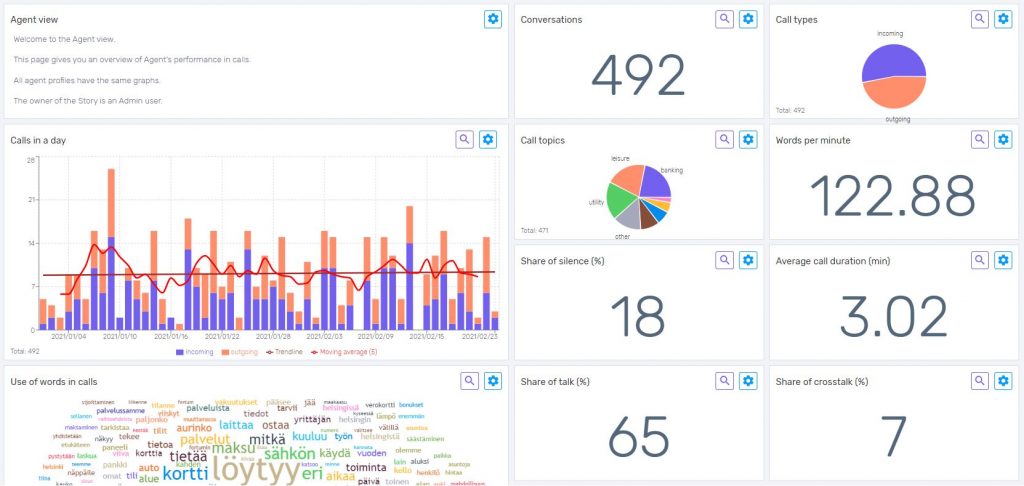
With Feelingstream, it is possible to look at each agent’s performance separately or together within a team. You can see stats for the whole channel or a specific topic. Whatever your interest is, you can look for it from the data – customer conversations will tell you much more than you could ever imagine. Remote customer service can be made efficient with conversation analytics, the same way you would find efficiency while working in the same room.
What have companies gained from using the Feelingstream platform?
We like to bring examples and wins to all of our blog posts, so make sure to read the ones we’ve already listed above. Let us show you some additional use cases now that you can look at in terms of efficiency. One is this use-case article about predefined topics. We’ve mentioned automated topics before as well, so scroll up to read about that.
When it comes to NPS scores, we’ve found that the numerical score and the text comment do not always match up. Read more in this article about our experience with customer feedback interpretation of NPS.
Another use case we’ve written a special article about is our experiment with email routing for the Ministry of Economic Affairs and Communications for the Republic of Estonia. We named this The story of an Inbox – as we were taking over inboxes to find ways of efficiency.
How can you strive towards efficiency for your business with the help of AI and Feelingstream?
If you’ve made it this far into the article, you must really be interested in making a change. Being more efficient in your business is not some goal that you simply reach within a day or a month. It’s also not a task that simply has an endpoint. The process towards efficiency is one of constant learning, analysis, listening to customers and making small changes. Then monitoring. Making another change and seeing what the effects are.
Feelingstream is also constantly working to better our processes and develop new features. We look for efficiency in our daily work and want to help you find efficiency for your business.
If you want to hear more, reach out. Book your demo. Email us. We are happy to share!


